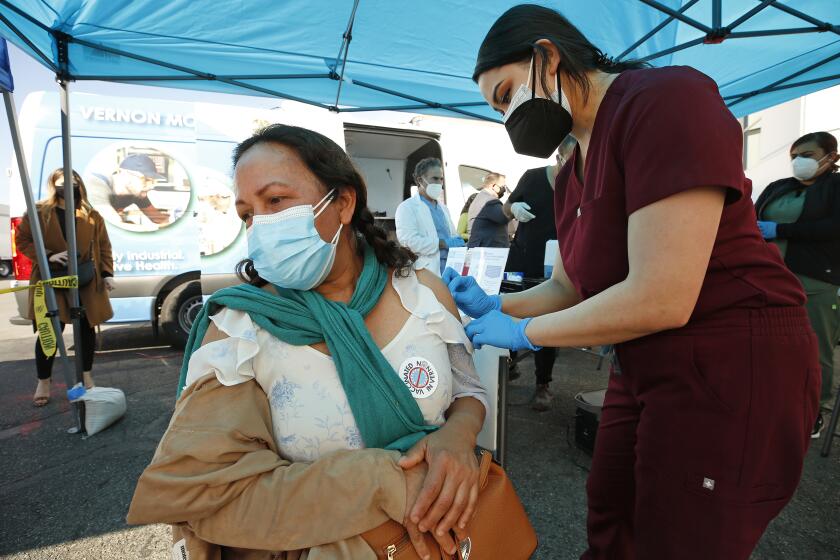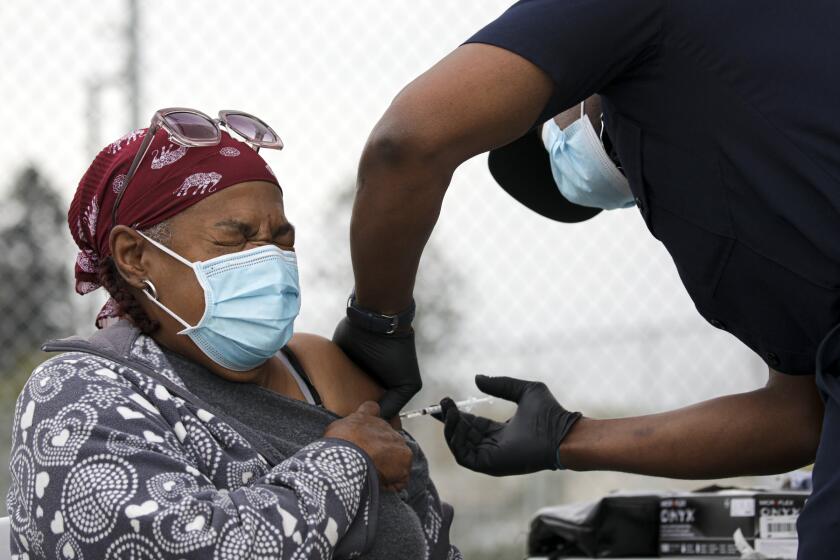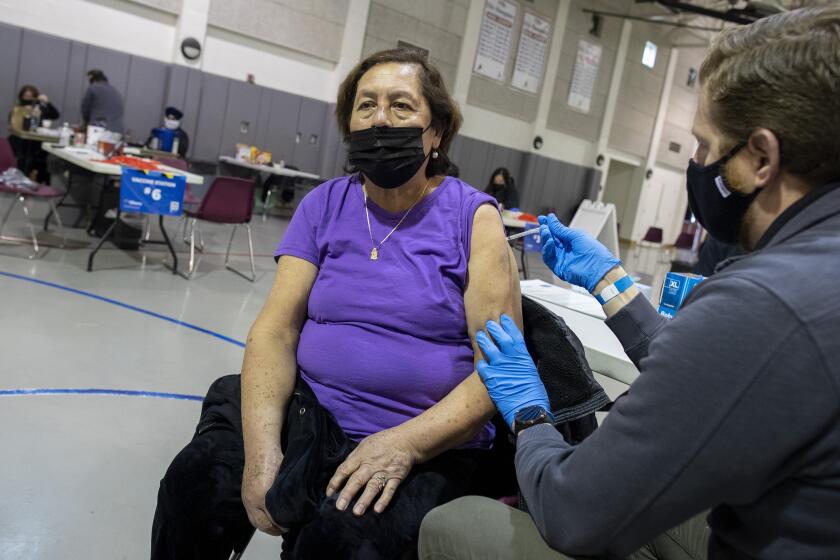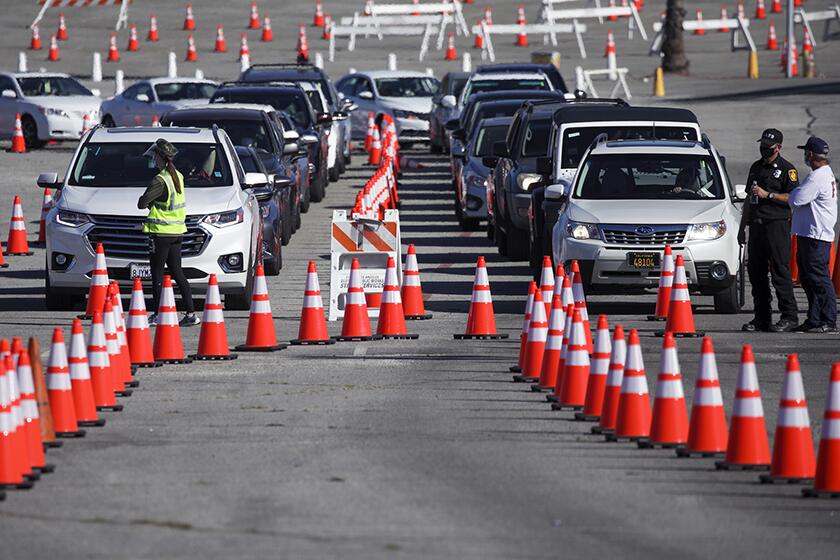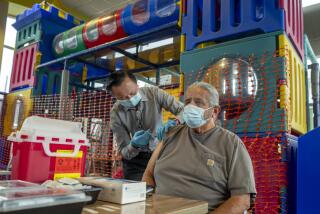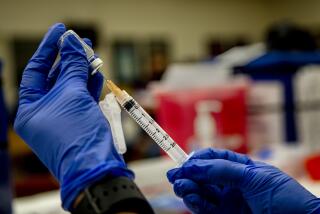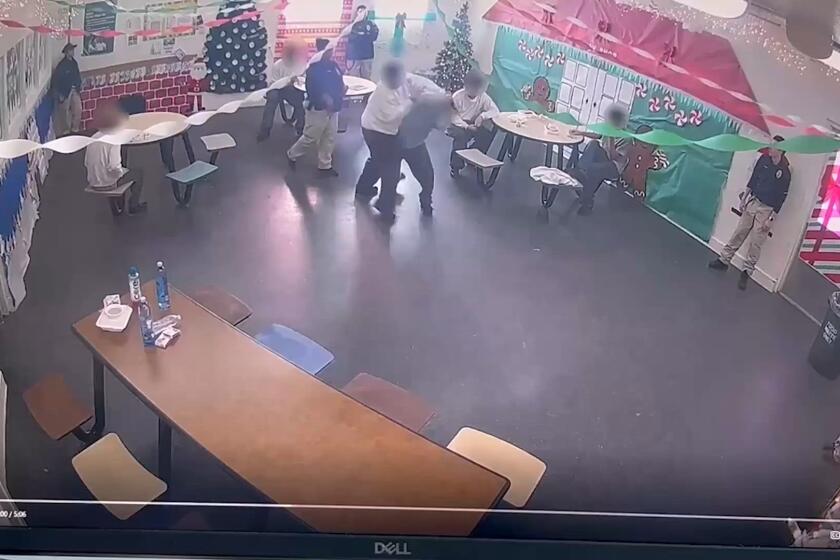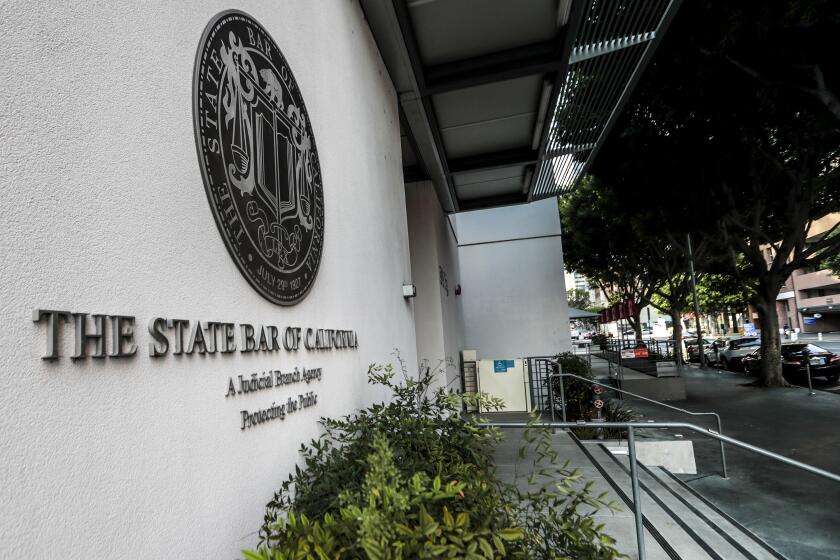California still trails many states in COVID-19 vaccinations. When will that change?
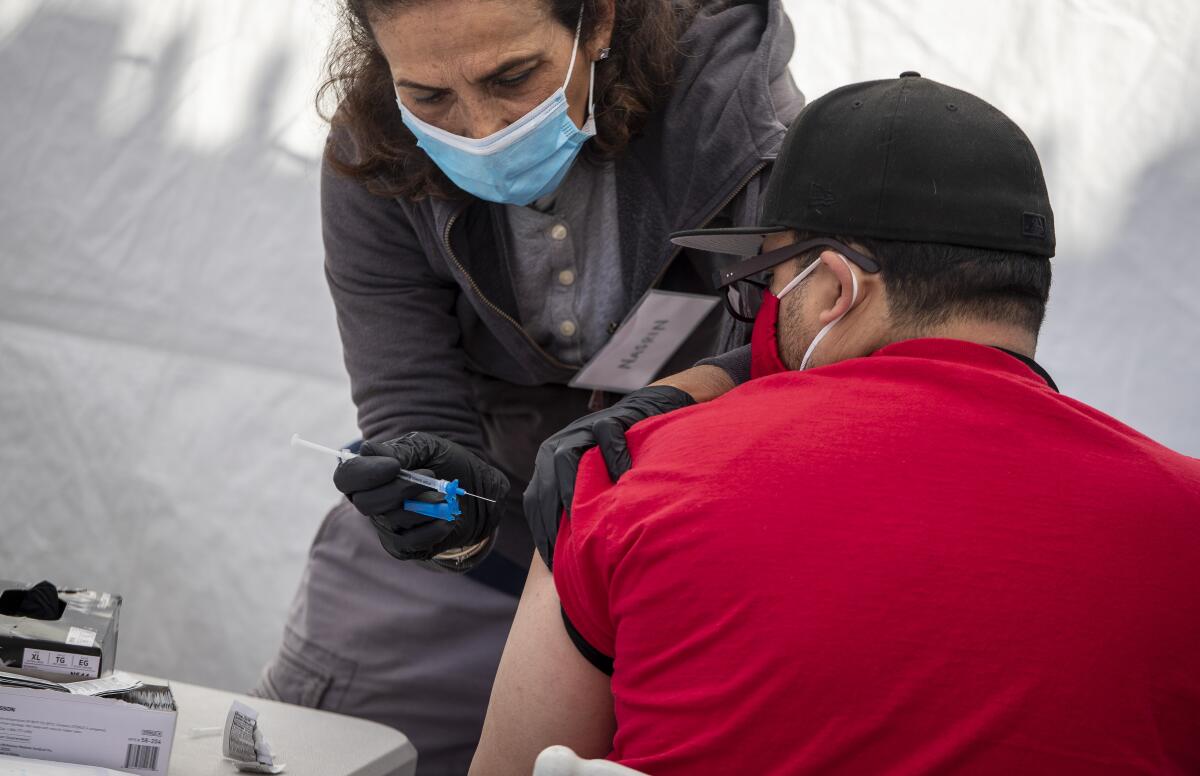
- Share via
COVID-19 vaccines have gone into Californians’ arms at a record rate this week, a promising acceleration that comes even as officials continue to warn of constrained supplies in the near future and as the state stubbornly lags behind many others in how widely the doses are being distributed.
The last six days have seen the six highest single-day totals of shots given out statewide, according to data compiled by The Times. During that stretch, roughly 2.35 million doses were administered statewide — including 344,489 on Thursday and 387,015 on Friday.
The recent torrent of inoculations, however, belies the major challenge that has and will continue to stymie the race to vaccinate as many Californians as quickly as possible, at least in the immediate future: a shortage of supply.
“We don’t have enough vaccines. I could double the capacity today if you got me those vaccines,” Los Angeles Mayor Eric Garcetti said Friday during an interview with Dr. Howard Koh, a professor at the Harvard T.H. Chan School of Public Health.
Those disruptions in the vaccine stream persist even as California widens the pool of residents who are eligible.
However, there is hope that the tap will loosen significantly in the not-too-distant future.
“We’re anticipating within 5½ weeks … we can eliminate all of the tiering, so to speak, and make available vaccines to everybody across the spectrum because supply will exponentially increase,” Gov. Gavin Newsom said Friday.
Where do we stand on vaccinations?
California received 1.7 million vaccine doses last week, according to Newsom. That allotment grew slightly to 1.75 million this week and was expected to be 1.8 million next week.
Though trending upward, shipments of that size would probably not be sufficient for the state to maintain the rate of vaccinations seen in recent days.
To date, nearly 13.8 million shots have been administered statewide — roughly 78% of the total supply that has been delivered to local public health departments and medical providers, according to the California Department of Public Health.
Two of the vaccines approved for use in the United States — one from Pfizer and BioNTech, and the other from Moderna — require two doses, administered weeks apart. The third, from Johnson & Johnson, requires only one dose.
From mid-December through early March, 10 million COVID-19 vaccines were administered statewide. In the two weeks after that, over 3 million shots were given.
How does that compare nationally?
To date, 23.5% of Californians have received at least one vaccine dose — a proportion that ranks 33rd out of all states and U.S. territories, according to data from the federal Centers for Disease Control and Prevention.
By comparison, 31.4% of New Mexico’s population has gotten at least one shot, as have 29.6% of Alaskans and 29% of those living in South Dakota.
California measures up better compared with more populous states. As of Friday, 24.3% of residents had received one shot in Pennsylvania, 24.2% in New York, 22.2% in Florida and 20.9% in Texas, CDC data show.
Nationwide, 23.3% of Americans have received at least one dose, and 12.6% of the country’s total population is fully vaccinated, according to the CDC.
Roughly 11.8% of all Californians have been fully vaccinated.
California is somewhat ahead of the national curve when it comes to vaccinating its older residents. Roughly 71.9% of residents ages 65 and older have received at least one dose, according to the CDC, compared with the nationwide figure of 67.1%.
The side effects of a second shot of COVID-19 vaccine are a sign that it’s providing more vigorous, long-lasting protection against the coronavirus.
What does the pipeline look like?
Officials have expressed optimism that vaccine supplies will grow in the weeks ahead, particularly as shipments of the Johnson & Johnson vaccine, which have been interrupted by production issues, begin to arrive regularly.
“We expect to receive much larger quantities of the Johnson & Johnson vaccine beginning at the end of this month,” Dr. Paul Simon, chief science officer with the Los Angeles County Department of Public Health, said Friday.
The county anticipates receiving somewhere in the neighborhood of 280,000 doses next week — with only about 6,000 of those from Johnson & Johnson, he added during a briefing.
County officials estimate they could administer more than twice as many as that each week, if they had sufficient supply.
President Biden said last week that restrictions on who could make a COVID-19 vaccine appointment would be lifted nationwide by May 1, as supply is expected to be sufficient to meet demand.
“You heard it from the president himself. You heard it from the CEOs that are responsible for manufacturing these vaccines that we’re going to be in a completely different place in six or so weeks as we see the significant increase in manufactured supply,” Newsom said during a briefing Tuesday.
The U.S. Department of Health and Human Services has since issued a formal order to that effect, said Andy Slavitt, a senior advisor on the president’s COVID-19 task force.
“Even as we take steps to expand eligibility for vaccines in advance of May 1, we continue to emphasize to states the importance of prioritizing vaccinations for higher-risk populations,” he said during a briefing Wednesday.
However, as Newsom pointed out, throwing the doors open will require a much larger, and more consistent, supply of vaccine.
In L.A. County, Simon said, “we feel like if we get a million doses a week, we’re in pretty good shape, I think, to make everybody 16 and above eligible.”
“Particularly if a large amount of it is Johnson & Johnson, which only requires one dose, I think we could then work through that general adult population pretty quickly, within a month or two, given that we’re already pretty far along,” he said.
More than 3.3 million doses have been administered countywide so far, state data show.
“I think the further along we get, the more important this reluctance of some to be vaccinated will become,” Simon said. “And I think we’re going to have to work very, very hard to make sure that everybody has accurate information about the vaccines, and if the vaccines continue to demonstrate the strong safety profile that they have so far, I think we can continue to reassure people that they are safe.”
COVID-19 supply in California is tight. But that is expected to change soon. Here is what we know.
Who is eligible now?
Nearly half of all Californians — including adults 65 and older, healthcare workers, educators, people who are incarcerated or living in homeless shelters, essential workers such as those in the food industry or emergency services, public transit workers and janitors, and residents 16 and older who have disabilities or underlying health conditions — are eligible for the vaccine.
The list is not exhaustive, as the state continues to offer specifications for who qualifies under the various categories.
How do you get the vaccine?
Californians with disabilities or qualifying underlying health conditions do not need to present documentation of their condition to join the vaccination queue. Instead, all will be required to self-attest that they meet the criteria.
That allowance clears up confusion about how high-risk people can prove their eligibility. Advocates have long pressed for a process that would not create unnecessary barriers, especially for those who are less mobile or intellectually disabled.
The guidelines essentially place a burden of trust on residents to accurately represent their eligibility. However, some officials have expressed concern that the lenient rules could be ripe for abuse by those looking to cut in line.
The Newsom administration estimates the state will spend more than $15 billion on its COVID-19 response between 2020 and 2022.
Those worries don’t come out of thin air. Throughout the rollout, some people have forged documents and improperly used access codes intended for high-risk communities to try to get shots before their turn.
Officials are urging residents to work with their healthcare providers to seek vaccinations.
“Check first with your usual healthcare provider to see if they have vaccines and available appointments. Healthcare providers who have vaccines may also begin reaching out to you, as a patient with a significant, high-risk medical condition or disability known to the provider, to schedule your vaccine appointment,” the state said.
Other options include pharmacies, health departments, community pop-up clinics or using the My Turn website. Access details can be found:
- Online at myturn.ca.gov. The My Turn website is accessible to people with disabilities and in eight languages: English, Spanish, Tagalog, Vietnamese, Mandarin, Cantonese, Korean and Japanese.
- Or by calling the COVID-19 hotline at (833) 422-4255 from 8 a.m. to 8 p.m. Monday through Friday, or 8 a.m. to 5 p.m. Saturday and Sunday.
More to Read
Sign up for Essential California
The most important California stories and recommendations in your inbox every morning.
You may occasionally receive promotional content from the Los Angeles Times.
